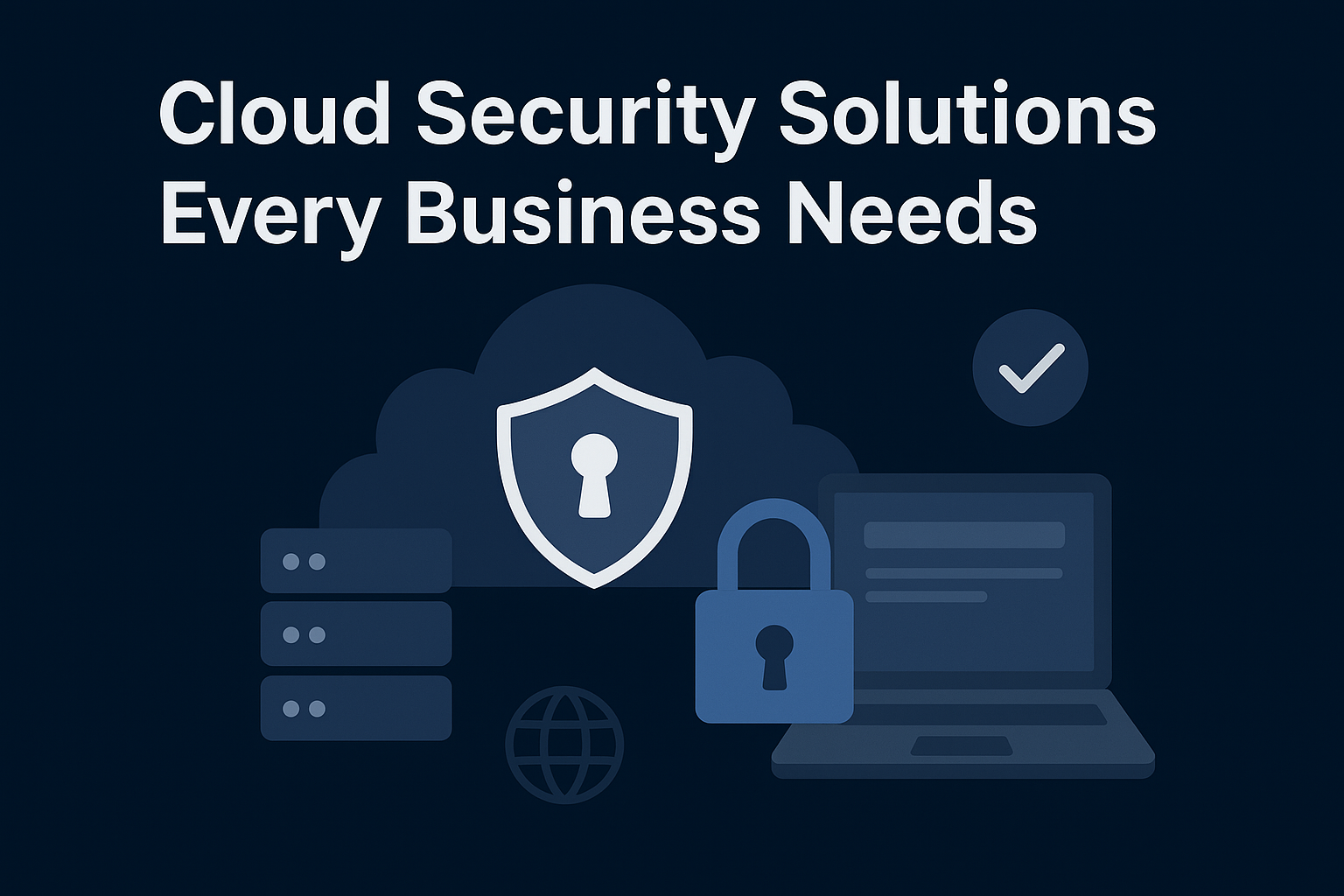Introduction
Cloud computing has transformed the way businesses store data, run applications, and collaborate. But with these benefits comes one of the biggest risks: cybersecurity threats. Hackers, data leaks, and malware attacks are increasing every year, making cloud security a top priority for businesses of all sizes.
In this article, we explore the Cloud Security Solutions Every Business Needs in 2025. Whether you run a startup, manage an e-commerce store, or grow a blog, understanding cloud security is critical for long-term success.
Just like investing in affiliate marketing with hosting or learning how to earn money from blogging in 2025, adopting the right cloud security solutions ensures your hard work remains safe.
Why Cloud Security Matters
- Data Protection – Prevent unauthorized access to sensitive customer and business data.
- Compliance – Businesses must meet standards like GDPR, HIPAA, and SOC 2.
- Business Continuity – Cloud security reduces downtime after attacks.
- Customer Trust – Protecting data builds credibility and long-term relationships.
- SEO & Growth – Secure sites rank better on search engines, supporting strategies like SEO for beginners.
Top Cloud Security Solutions Businesses Need
1. Data Encryption
Encryption ensures that even if hackers access your files, they cannot read them.
- Types: At-rest encryption, in-transit encryption, and end-to-end encryption.
- Example Tools: AWS KMS, Microsoft Azure Encryption, Google Cloud KMS.
Why It Matters: Protects sensitive data like customer info, payment details, and login credentials.
2. Multi-Factor Authentication (MFA)
Passwords alone are weak. MFA requires an extra step (SMS code, authenticator app, biometric).
- Tools: Okta, Duo Security, Microsoft Authenticator.
- Benefit: Prevents unauthorized logins even if passwords are stolen.
3. Identity and Access Management (IAM)
IAM ensures only authorized users can access critical resources.
- Features: Role-based access control, single sign-on, monitoring login attempts.
- Example Tools: AWS IAM, Ping Identity, OneLogin.
💡 Teams using cloud services for WordPress hosting or SaaS projects should enforce IAM to protect admin accounts.
4. Cloud Firewalls
Cloud firewalls monitor and filter network traffic to block malicious activities.
- Types: Web Application Firewall (WAF), Next-Gen Firewalls.
- Tools: Cloudflare WAF, AWS WAF, Palo Alto Prisma.
5. Intrusion Detection & Prevention Systems (IDS/IPS)
These systems detect suspicious activity and stop potential threats before they spread.
- Tools: Snort, Suricata, IBM QRadar.
- Benefit: Essential for e-commerce and online businesses handling payments.
6. Backup & Disaster Recovery
Cyberattacks and system failures can cause massive data loss. Regular cloud backups ensure recovery.
- Tools: Veeam, Acronis, Backblaze.
- Benefit: Keeps your blog, e-commerce, or SaaS business online even after attacks.
7. Endpoint Security
Employees use laptops, phones, and tablets to access the cloud. Each device is a potential entry point.
- Tools: CrowdStrike Falcon, Symantec Endpoint, Bitdefender.
- Benefit: Protects small teams and remote workers.
8. Security Monitoring & Threat Intelligence
Real-time monitoring helps detect suspicious logins, DDoS attacks, or data leaks.
- Tools: Splunk, Sumo Logic, AlienVault.
- Benefit: Provides proactive protection rather than waiting for damage.
9. Compliance Management Solutions
Cloud compliance solutions help businesses meet legal requirements like GDPR or SOC 2.
- Tools: Drata, Vanta, Tugboat Logic.
- Benefit: Avoids fines and builds customer trust.
10. AI-Powered Cloud Security
Artificial Intelligence (AI) is now being used to predict and block new cyber threats.
- Tools: Darktrace, IBM Watson Security.
- Benefit: Smarter protection that adapts to evolving risks.
📌 Just like AI tools for content creators boost productivity, AI in cybersecurity enhances real-time defense against threats.
Cloud Security Best Practices for Businesses
- Always enable two-factor authentication.
- Use strong passwords with a password manager.
- Regularly update software and security patches.
- Educate employees about phishing and malware.
- Integrate security with your blogging and SEO strategies to protect rankings.
Comparison Table of Key Cloud Security Tools
| Solution | Best Tools | Key Benefit | Suitable For |
|---|---|---|---|
| Data Encryption | AWS KMS, Azure, Google Cloud | Protect sensitive data | All businesses |
| MFA | Okta, Duo, Microsoft Authenticator | Prevent login theft | Small teams & enterprises |
| IAM | AWS IAM, OneLogin | Access control | SaaS & hosting |
| Cloud Firewalls | Cloudflare, AWS WAF | Block malicious traffic | Websites, blogs |
| IDS/IPS | Snort, IBM QRadar | Detect & stop attacks | E-commerce & finance |
| Backup/Recovery | Veeam, Backblaze | Prevent data loss | Startups & SMEs |
| Endpoint Security | CrowdStrike, Symantec | Protect devices | Remote workers |
| Monitoring | Splunk, AlienVault | Real-time alerts | All businesses |
| Compliance | Drata, Vanta | Meet legal standards | Regulated industries |
| AI Security | Darktrace, IBM Watson | Predictive protection | Growing enterprises |
Conclusion
Cloud security is no longer optional. Businesses in 2025 face growing cyber threats that can cost millions in losses and damage customer trust.
- For small blogs → use MFA, backups, and IAM for WordPress.
- For growing startups → invest in firewalls, IDS/IPS, and endpoint protection.
- For enterprises → adopt AI-powered tools and compliance platforms.
By securing your cloud infrastructure, you protect your brand, customers, and growth. Combine these solutions with SEO for beginners, quality hosting, and blogging income strategies to build a strong, safe online business.
